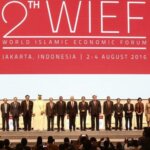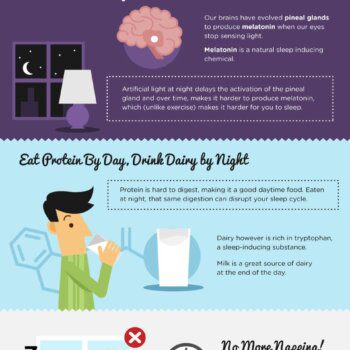Humanity and technology continue to co-evolve at an ever increasing pace, leaving traditional institutions (and mindsets) calcified and out of date. A new paradigm is emerging, where everything is increasingly connected and the nature of collaboration, business and work are all being reshaped. In turn, our ideas about society, culture, geographic boundaries and governance are being forced to adapt to a new reality.
While some fear the loss of control associated with these shifts, others are exhilarated by the new forms of connectivity and commerce that they imply. Transactions and interactions are growing faster and more frictionless, giving birth to what I call a “superfluid” economy.
Business will not return to usual. So let’s discuss 4 key concepts to help us better understand the shifts that are underway:
1. Quantifying and mapping everything
Technological acceleration isn’t just a phrase. Whether looked at through the lens of the Law of Accelerating Returns or the trend described as Moore’s Law, computing capabilities continue to increase exponentially. Our devices are becoming smaller yet more powerful. Cost continues to drop.
This may lead to technologies becoming so tiny that they simply fade into the background experience of our lives.
So what? What is the purpose of faster, more powerful technology? What are we trying to accomplish?
Think about it this way: The whole of human history has been spent trying to understand ourselves, our environment and what it all means. Whereas a guru might advise “Know thyself,” a technologist might suggest “Quantify thyself.”
Technology tackles the challenge of self knowledge through the pursuit of full-systems quantification – creating a simulation and map of everything.
This is already happening all around us at the individual level. Our location is being tracked by our mobile devices. Our preferences, buying behaviors and social connections are being tracked online. Our providers and 3rd party agencies are tracking our financial histories and medical records.
The aggregated information forms a digital profile of who we are and what we care about. This information can be helpful in creating personalized recommendations for products and services. It also makes governmental surveillance or manipulation that much easier. On the other hand, making previously invisible information transparent means it can be quantified and measured, so economic value can be tied to it.
On a larger scale, we’re seeing how data can be converted to become a useful tool for crisis mapping and visualizing real-time information. Supply chains can be mapped to help us assess the carbon footprint of the products we purchase. There’s even an initiative to map the real-time statistics of the entire planet, dubbed the Earth Dashboard.
The big picture is that the more information we’re able see, the more effective we can be at making intelligent decisions that have positive effects on our lives and our environment.
2. Everyone has access to the internet
One of the effects of cheaper, web-enabled devices is that we’re moving towards getting the world online. Half a billion people worldwide accessed the mobile internet in 2009, and that number is estimated to double over the next 5 years. A recent forecast by In-Stat projects close to a billion smart phones will be shipped worldwide by 2015.
In countries and emerging markets with low or no connectivity, the financial and infrastructural challenges of laying down cables will be leapfrogged as these places transition directly to a wireless web via mobile devices.
In addition, the ‘unbanked’ are being brought into financial inclusion through innovative services like M-PESA that enable the transfer of money via mobile phones. So within a few short years, we may see billions more people connected to the internet and capable of participating in economic transactions.
For those that are already connected, the move to mobile is making the distinction between being online and offline disappear. It’s estimated that about 788 million people will access the Web solely through their mobile device by 2015, meaning the web will simply go with us wherever we go.
Add in mobile augmented reality (Layar, Wikitude, Acrossair), which provides an information layer onto our immediate environment, along with near-field communication technologies, which enable contextual information to be sent to you based on your location, and we have an extremely empowering tool literally at our fingertips at all times.
3. Self-organizing expands
How we feel about things, how we organize collective action and how we exchange value with others are central themes to social, political and economic life. Each of these areas is now being expressed online in more robust and granular ways.
Comments, Facebook likes, recommendations, and reviews all contribute to the growing layer of social metrics that reveal general perception around brands, people, events, issues and topics of interest. Not only could this alter the way democracy works by gathering real-time sentiment and developing positive feedback loops for improving civil society, it also shifts the way people make decisions about purchases or lifestyle behaviors. Businesses are finding that customer engagement is becoming a more collaborative and co-creative experience – a partnership instead of just one-way communication and pushing a sale.
The ability to express sentiment and then self-organize around shared interests or common causes also has far-reaching implications for how the world operates.
As we’ve seen in the recent uprisings in the Middle East, networking tools can empower people to unite and organize collective action. In less disruptive scenarios, they enable businesses to form new partnerships, organizations to share resources or individuals to collaborate on a project at the neighborhood level.
4. Peer-to-peer exchange changes the future of money
All of these tools offering ways for people to connect, quantify, collaborate, and take action add up to new infrastructures for building trust and exchanging value at every level. You can explore Collaborative Consumption to see the hundreds of peer-to-peer marketplaces that are springing up around the world, or check out The Mesh Directory to see how businesses are leveraging social networks and resource sharing to up their efficiency.
As money and exchange increasingly go digital, our assumptions about what “currency” means are also being challenged. Facebook Credits, for example, are Facebook’s internal virtual currency used to purchase digital goods within their game ecosystem. There are already apps being developed to reward potential customers with discounts and free merchandise in exchange for playing social games and brands are rewarding users with Credits to perform certain actions on their behalf.
On the fringes of society exists the complementary currency market – a range of mechanisms that allow for peer-to-peer value exchange through mutual credit systems like LETS or via decentralized currencies like Bitcoin. When the tools are in place to allow individuals or groups within a local area to easily exchange value without using traditional/centralized currency, it’s reasonable to expect a serious challenge to the ingrained public perception of money.
How to be “superfluid”
We live in a vast series of interconnected and nested systems, each affecting how the others operate. The shifts we’re seeing aren’t siloed or isolated, but rather systemic changes that have been happening throughout evolutionary history. They’re now happening at an accelerated rate, which means we have to adapt by finding ways to stay resilient and agile in a constantly changing environment.
Those finding success are adopting a “both/and” approach, rather than a black and white “either/or” solution. It is not necessary to abandon every time-tested practice and jump headfirst into something radically new. But, it is wise to integrate new approaches as a sort of hybrid “coopetition” – going from push to pull, defining a new capitalism, and welcoming “social” as a 21st century strategy.
The future we aspire to consists of business practices and ethics that are not zero–sum, meaning that cooperation and trust can lead to benefits for all. Unused or mis-allocated resources are channeled to unmet needs. Wealth is not just a number on a financial statement, but rather a celebration of sustainable and resilient communities, a clean environment and an educated and informed society.
It is our choice to enable such a future or not. In the end, we’re all in this together.
___________________
About the Author
This article has been written by Venessa Miemis, who is an author at emergent by design. Emergent by design is Venessa’s blog and it explores the co-evolution of humanity and technology. see more.





























